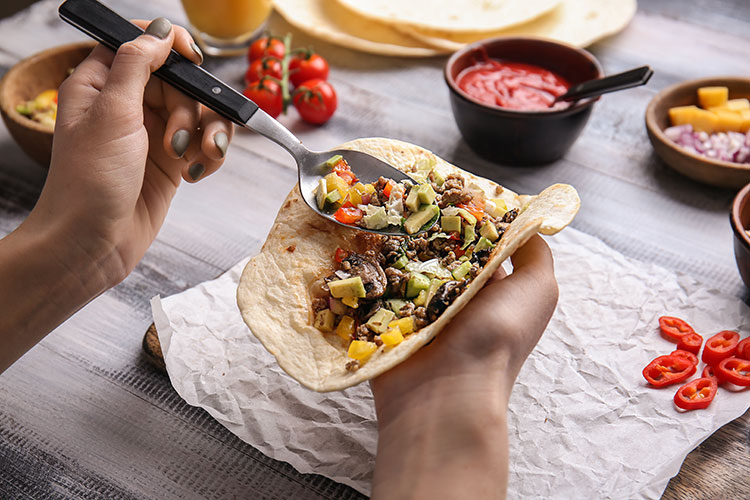As America becomes more ethnically diverse, demand for foods from newcomers’ home countries will continue to rise. About seven in 10 chefs told the National Restaurant Association that ethnic-inspired foods would be the top food trend in 2019.
But that demand extends far beyond members of ethnic groups craving the foods from the countries they grew up in. Americans across the board are craving more ethnic fare, regardless of where it — and they — came from.
Twenty-first century consumers — millennials and Gen Z in particular — are adventurous, curious and global-minded. And that applies to all kinds of foods, including baked goods, whose versatility is a perfect fit for the exotic flavors, textures and stories ethnic foods have to offer.
“We’ve already seen a large push for ethnic-inspired products in the bakery segment, with more vibrant and exciting flavors popping up everywhere,” said JoAnn Rupp, Global Market Insights Manager for Lenexa, Kan.-based Corbion.
Increased exposure to different types of breads and the ways consumers around the world enjoy them has broadened bakers’ perspectives on how grain-based foods fit into diets. Ethnic foods give them the inspiration to formulate products that go beyond traditional or expected bakery formats. And that, Rupp said, is what today’s consumers want.
“There has been so much variety and spread in the choice of authentic cuisines around today’s connected world that it’s led to consumers of all ages becoming more knowledgeable of other cultures,” she said. That’s created an opening for more visually appealing and authentic products that contain specific ingredients and flavors from around the world.
Global flavors, bigger margins
And for those on the fence about whether or not to expand their ethnic offerings, here’s something to keep in mind: consumers are willing to pay more for them. According to Technomic’s 2018 Ethnic Food & Beverage Consumer Trend Report, 32% of consumers are willing to pay more for authentic ethnic fare.
About one in four Americans are trying more unique ethnic foods and beverages today than two years ago, according to Technomic. For younger Americans (ages 18 to 34) it’s more than one in three. Millennials and Gen Z grew up eating Mexican, Japanese and other ethnic foods — for them, a lot of what older Americans would call “ethnic” is just another branch of “mainstream.”
“Ethnic-inspired products allow consumers to explore the world while remaining close to home, and many of the applications make snacking and meal time more convenient.”
Ashley Robertson, Market Manager, Bakery, Corbion
When it comes to baked goods, demand for ethnic and global foods has created an explosion of interest in tortillas, flatbreads, Danishes, buns and other products. And for a stagnant category like fresh bread, ethnic breads (challah, pane di casa and Jamaican hard dough bread, to name just a few) are providing a much-needed shot of enthusiasm.
And that’s not all. Sriracha-blended varieties are popping up everywhere, and the bread segment is no exception. The number of bread categories containing sriracha grew 74% from 2017 to 2018. Tortillas and flatbreads are also flourishing, thanks to the growing Hispanic population and the growth in snacks with Spanish, Latin American, Indian and Mediterranean origins. The global tortilla market was valued at $1.18 billion in 2017 and is projected to grow to $1.23 billion by the end of 2028.
“We expect these products to continue to grow in value and popularity as demand for authentic, ethnic-inspired foods rises,” Rupp said. “Ethnic-inspired products allow consumers to explore the world while remaining close to home, and many of the applications make snacking and meal time more convenient.”
Flatbreads, for example, allow consumers to add ethnic flair to their favorite on-the-go dishes — pizza, sandwiches, snacks, appetizers — while controlling their portion sizes. Flatbreads and tortillas also hit on other key trends, including the growing demand for clean-label, lower carb and gluten-free options.
Drilling down further into the flatbread category, look for naan to play an ever more important role in American diets. And global flavors like chilis, herbs, mint, limes, berries and floral flavors are also increasing in popularity as consumers continue to look for new and exciting ways to explore the world through the foods they eat. These and other flavors can be used, Rupp said, to spice up breakfast options like pastries or to create Middle Eastern- and Latin-inspired fare like flatbreads and naan.
Tools and resources
To help its customers tap into the surging demand for ethnic-influenced products, Corbion offers a variety of tools and resources, including solutions for large deli wraps, everyday applications and clean-label formulations, that help bakers improve the softness, freshness and rollability of ethnic-inspired products.
Corbion’s flavored meisters and specialty frozen-dough items, for instance, provide added convenience, ease of use and consistency for bakers incorporating new, unique flavors and products that appeal to today’s adventurous consumers.
“As with any baked good, the primary challenges bakers face when producing ethnic-inspired products is delivering on consumer expectations for taste, texture and freshness,” Rupp said. “We offer several solutions to help customers meet those consumer expectations while maintaining the quality and consistency of their products.”
For example, Corbion’s Tortilla Supreme base helps bakers reduce sticking and snapback of tortillas during production. The company’s Tortilla Suave GR conditioner combines a balanced blend of ESL technology and anti-stick ingredients that reduce stickiness, improve softness and increase tortilla rollability. Corbion also offers customers easy-to-use baking blends that deliver the consistency, ease of use and quality they demand.


